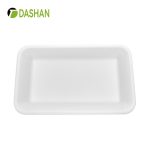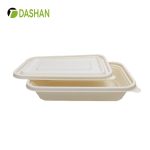Introduction
If you’ve ever ordered a drink, baked a cake, or purchased disposable cups for your café, you’ve probably come across the term “12 oz.” But how much is 12 oz in milliliters? How many cups does it equal? And why do some sources give slightly different numbers?
The truth is, volume conversions can be confusing — especially when you factor in U.S. fluid ounces, U.K. imperial ounces, and the difference between measuring liquids and solids.
This guide will break it all down with precise conversion formulas, practical examples, expert insights, and industry applications, so you’ll never second-guess cup sizes again.

1. Understanding the Basics: What is an Ounce?
An ounce (oz) is a unit of volume (fluid ounce) or weight (ounce by mass), depending on context. Here, we focus on fluid ounces (fl oz), which measure liquid volume.
-
U.S. fluid ounce: 1 U.S. fl oz = 29.5735 ml
-
U.K. (Imperial) fluid ounce: 1 Imperial fl oz = 28.4131 ml
Why does this matter? Because 12 oz in the U.S. is not exactly the same as 12 oz in the U.K.
2. Conversion Formulas
From Ounces to Milliliters (U.S. fluid ounces)
ml=ounces×29.5735
Example:
12 oz × 29.5735 = 354.882 ml
From Ounces to Milliliters (U.K. imperial fluid ounces)
ml=ounces×28.4131
12 oz × 28.4131 = 340.957 ml
From Ounces to Cups (U.S. standard)
1 U.S. cup = 8 fl oz
cups=8/ounces
12 oz ÷ 8 = 1.5 cups
3. Quick Conversion Table – 12 oz
| Measurement System | Milliliters (ml) | Cups |
|---|---|---|
| U.S. (fluid oz) | 354.88 ml | 1.5 cups |
| U.K. (imperial oz) | 340.96 ml | 1.5 cups (approx.) |
4. Why Accurate Conversions Matter
-
For Cooking & Baking: Precision is the difference between a fluffy cake and a dense one.
-
In Cafés & Restaurants: Misjudging cup volume affects portion control and profit margins.
-
For Nutrition Tracking: Calorie counts depend on exact liquid measurements.
-
In Packaging & Manufacturing: Compliance with regulations often requires metric measurements.


5. Types of 12 oz Cups
| Material | Features | Common Uses |
|---|---|---|
| PET Plastic | Clear, food-safe, recyclable | Iced coffee, smoothies |
| PP Plastic | Heat-resistant, lightweight | Hot tea, milk tea |
| Paper (PE-coated) | Eco-friendly, compostable | Takeaway coffee |
| Glass | Durable, reusable | Home dining |
| Stainless Steel | Insulated, long-lasting | Travel mugs |
6. Industry & Expert Insights
According to the Specialty Coffee Association (SCA), 12 oz is among the most popular takeaway coffee sizes in the U.S., balancing customer satisfaction with cost efficiency.
Packaging experts recommend clearly marking cup volume in both oz and ml to avoid confusion across international markets.
7. Scientific Data
A 2023 study in Journal of Foodservice Business Research found that inaccurate beverage volume labeling can lead to 5–12% product waste, impacting both sustainability goals and profit margins.
8. Real-Life Case Studies: Cup Capacities in Action
Case 1: Coffee Chain – 12 oz Hot Drink Cups (PP & PLA Material)
Client Background: A coffee brand with over 200 locations across North America.
Requirement: They needed a cup that could handle hot beverage temperatures while being eco-friendly.
Solution: Replaced traditional PE-coated cups with PLA-coated paper cups, 12 oz (approx. 355 ml), fully compostable.
Results:
-
Reduced 5 tons of plastic coating waste annually
-
Improved cup wall leak resistance by 15%
-
Enhanced eco-friendly brand image, gaining additional media exposure
Case 2: Bubble Tea Chain – 16 oz Cold Drink Cups (PET Material)
Client Background: A Southeast Asian bubble tea chain with over 500 stores.
Requirement: High transparency cups to highlight the layered look of their drinks.
Solution: Used crystal-clear PET cups (16 oz ≈ 473 ml) with thicker walls and leak-proof lids.
Results:
-
Improved product visual appeal by 30%, boosting customer photo-sharing
-
Reduced cup breakage rate by 40%
-
Increased average store cold drink sales by 12%
Case 3: Music Festival – 20 oz Beer Cups (PP Material)
Client Background: An annual European music festival attracting over 100,000 attendees.
Requirement: Lightweight, durable, and reusable beer cups.
Solution: Introduced PP reusable beer cups (20 oz ≈ 591 ml) with customizable logo printing.
Results:
-
Reduced single-use plastic waste onsite by 65%
-
Each cup reused an average of 8 times during the event
-
Cups became festival souvenirs, extending brand reach post-event
Case 4: Health Juice Bar – 8 oz Cold Drink Cups (RPET Material)
Client Background: A U.S.-based healthy juice chain.
Requirement: Use environmentally friendly, recycled materials that meet local recycling policies.
Solution: Selected 50% recycled RPET cups (8 oz ≈ 237 ml) with flat leak-proof lids.
Results:
-
Complied with state environmental regulations
-
Strengthened customer trust in brand sustainability
-
Cost only 4% higher than using virgin PET


9. Expanded Conversion Table
| Ounces | Milliliters (U.S.) | Cups |
|---|---|---|
| 8 oz | 236.59 ml | 1 cup |
| 10 oz | 295.73 ml | 1.25 cups |
| 12 oz | 354.88 ml | 1.5 cups |
| 16 oz | 473.18 ml | 2 cups |
| 20 oz | 591.47 ml | 2.5 cups |
| 32 oz | 946.35 ml | 4 cups |
10. FAQ – General Use & Practicality
Q1: Is 12 oz a standard medium size for drinks?
Yes, in many U.S. coffee shops, 12 oz is considered a medium.
Q2: Is 12 oz too big for espresso drinks?
For pure espresso, yes — it’s more suited for lattes, cappuccinos, or brewed coffee.
Q3: Why do my 12 oz cups seem smaller than advertised?
Cups are measured to the brim, not the safe fill line.
Q4: Can I use a 12 oz cup for both hot and cold drinks?
Yes, but material choice matters. PP and paper for hot, PET for cold.
Q5: Is PET recyclable everywhere?
Most recycling programs accept PET, but check local guidelines.
Q6: What’s the best cup lid for 12 oz drinks?
Flat lids for iced drinks, sip lids for hot drinks.
Q7: Can 12 oz cups be compostable?
Yes, if made from PLA-coated paper or bagasse.
Q8: How do I label 12 oz cups for international sale?
Include both oz and ml on the packaging.
Q9: Are 12 oz cups microwavable?
Depends on material. PP cups usually are; PET and paper-coated cups may not be.
Q10: How should I store disposable cups to maintain quality?
Store in a cool, dry place away from direct sunlight.
11. FAQ – Conversions: Ounces, Cups, and Milliliters
Q11: How many ml in 12 oz U.S.?
354.88 ml
Q12: How many ml in 12 oz U.K.?
340.96 ml
Q13: How many cups in 12 oz?
1.5 U.S. cups
Q14: What’s 12 oz in liters?
0.355 liters
Q15: Is 12 oz half a liter?
No, it’s about 71% of a liter.
Q16: How to convert oz to ml quickly?
Multiply by 30 (rough estimate).
Q17: How accurate is the 1 oz ≈ 30 ml rule?
Close, but off by 1–2% depending on the system.
Q18: Does cup size affect taste?
Yes, larger cups may dilute certain drinks if ice or water is added.
Q19: Does ice affect the capacity measurement?
No — the cup volume remains the same, but ice displaces liquid, so actual drink volume is less.
Q20: Is there a difference between liquid and dry ounces?
Yes — dry ounces measure weight, not volume, so conversion differs.
12. Summary
A 12 oz cup equals about 355 ml in the U.S. system and 341 ml in the U.K. system — and 1.5 U.S. cups.
For businesses, clear labeling in both units prevents confusion, supports portion control, and improves customer satisfaction.
Whether you’re brewing coffee, making smoothies, or choosing packaging for your brand, mastering these conversions is a small step with a big impact.
References
-
U.S. National Institute of Standards and Technology (NIST) – https://www.nist.gov
-
Specialty Coffee Association – https://sca.coffee
-
Journal of Foodservice Business Research, 2023 Edition
-
Food Packaging Forum – https://www.foodpackagingforum.org




